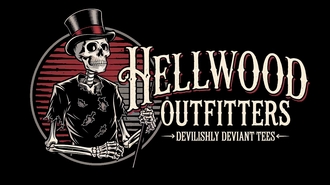Political Piggy T-Shirt

POLITICAL PIGGY T-SHIRT
A Manson Family t-shirt available in black or white cotton.
Messages written in blood. History written in horror.
The Political Piggy T-Shirt draws chilling inspiration from the words scrawled by the Manson Family at the murder scene of Gary Hinman. More than just vandalism, these words — including the phrase “Political Piggy” — became a terrifying symbol of the era’s darkest extremes, where violence, counterculture, and cult control collided.
Hinman, a sometime associate of the Family, was first assaulted by Manson himself before being killed by Bobby Beausoleil. Following Manson's instructions, Beausoleil wrote the words 'political piggy' on the wall in Hinman's blood and left a Black Panther styled pawprint in the hope that blacks would be blamed for the crime.
Charles Manson’s twisted philosophy and the brutal acts committed by his followers stunned the world, etching themselves into the public consciousness. This t-shirt pays tribute not to the crimes, but to the historical infamy of a phrase that echoed with menace, rebellion, and societal decay.
For fans of true crime, 1960s counterculture history, and those interested in the intersection of crime, rebellion, and cultural collapse, this piece offers a raw, unflinching look at one of history’s most infamous criminal episodes.
Because some messages are written to never be forgotten — no matter how dark they are.
💬 FREQUENTLY ASKED QUESTIONS (FAQs)
Q1: What does “Political Piggy” refer to?
A1: It’s a phrase written by the Manson Family in blood at one of their infamous crime scenes, intended as a chilling and cryptic political statement reflecting Charles Manson’s distorted worldview and the group’s delusions.
Q2: Why is this phrase so infamous?
A2: The phrase became a macabre symbol of the Tate-LaBianca murders, reflecting the countercultural chaos and violence of the era, and leaving a lasting mark on public consciousness.
Q3: Why make a t-shirt inspired by such a dark subject?
A3: This design is not about glorifying violence, but about acknowledging and remembering the infamy of an event that shocked the world. It’s a commentary on cultural history and the enduring power of chilling messages.















